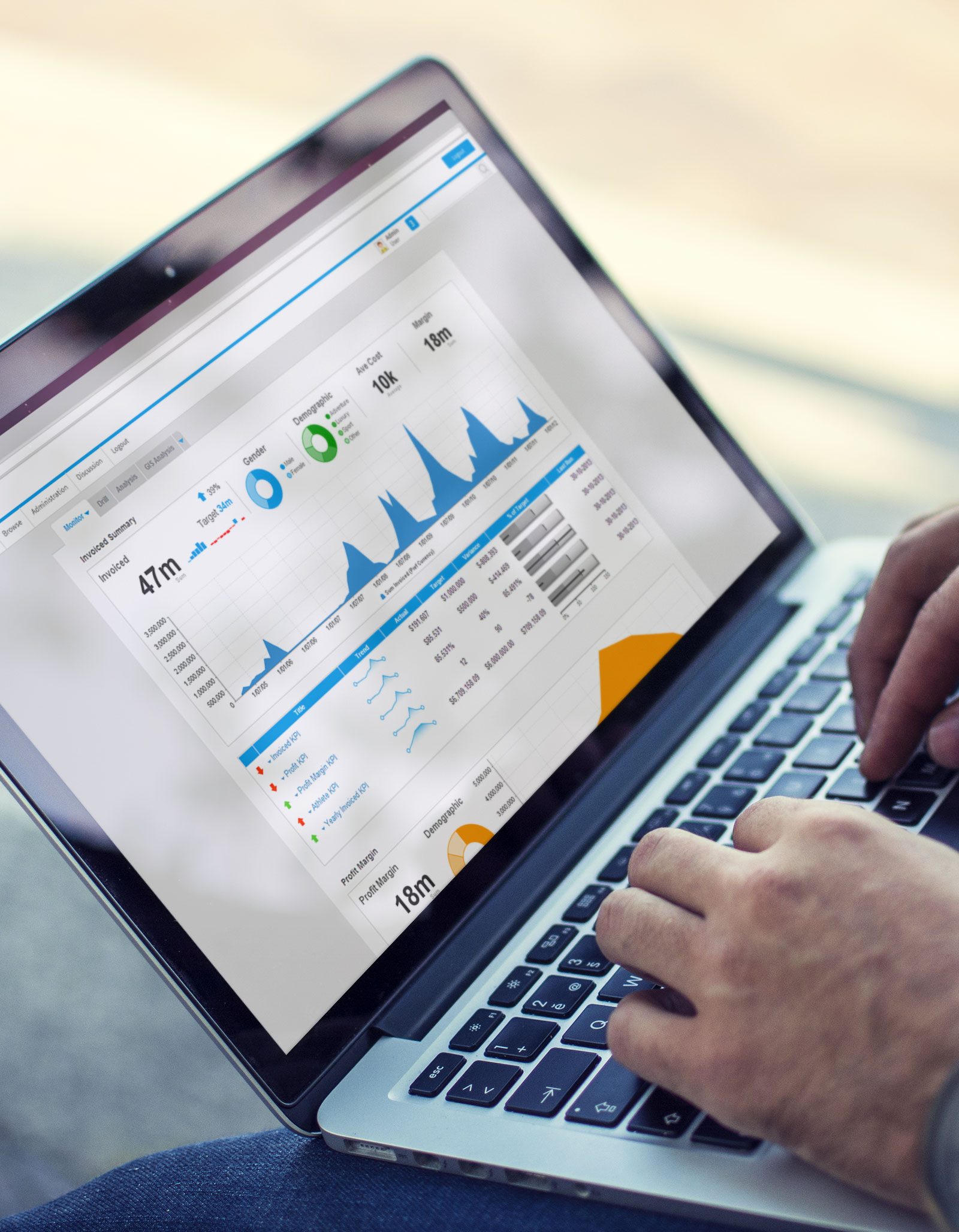Editor's note: This blog post has been updated in 2017 to provide current advice. It was originally published by Lachlan James in September 2012. We'd love to help you with your BI and analytics, so feel free to contact us here.
Data visualization and data discovery are the most critical elements of your Business Intelligence (BI) delivery - so they'd better be right.
Data visualization is the number one Business Intelligence trend in BARC's The BI Survey 2017. The primary way you deliver visualizations is through dashboards, which is why dashboards top the trends list year after year.
The persistent problem of rubbish Business Intelligence dashboard design and delivery works against the very purpose of BI itself – to get accurate, fact-based insights that help people make decisions and take action to lift performance. With actions based on data insights, you improve processes and achieve the competitive advantage.
“A dashboard is a visual display of the most important information needed to achieve one or more objectives; consolidated and arranged on a single screen so the information can be monitored at a glance.” – Stephen Few in “Dashboard Confusion”, Intelligent Enterprise magazine.
Here's all you need to know to avert the disastrous situation of failed dashboards.
Top 5 best practices for dashboard design

1. Make communication, not good looks, your number one priority
Your goal is to enable faster, more accurate decision making based on facts - data.
It’s not about how pretty your dashboards are. Making a dashboard visually appealing makes it more pleasant to look at and may even increase the likelihood of initial adoption, but it doesn't mean it is doing its job. Your dashboard needs to quickly and clearly communicate the right information in the best way possible. In short: Pretty is not the objective.
Communication is the objective.
How do you make it communicate? You need to design your dashboard to answer real business questions. Each report and KPI on that dashboard should provide a critical piece of information. Collectively, the reports and KPIs should answer the question that the dashboard was built for.
Visual appeal helps adoption, but not function. You need it to be useful in answering business questions before anyone will use it.
Get your full, free guide to optimising your dashboards here
2. Modern dashboards must be Web-based
Delivering BI dashboards via any means other than the Web puts you on dangerous ground with data governance. It's also restrictive. If your dashboards aren't Web-based, how else are you going to ensure that the data you're receiving is centralized, governed, and therefore trustworthy?
With Web-based BI you get close to real-time information that empowers you to grasp an opportunity or avoid a crisis. Web-based dashboards also give you the ability to share insights and spark instantaneous conversations with other decision-makers and prompt fast action. You get instant data and real-time collaboration around the data.
Everything else in your business is online, from your CRM to your HR system. It’s quicker, smarter and more convenient. So, make sure your dashboards are online too. With Web-based BI, you can host on-premise or in the cloud - private or public.
3. Put the most important information above the fold

Just like good journalists put the most important news in the first lines of their article, you should put all the most important reports and information above the fold - the part of your screen that you can see without scrolling. Doing so allows for faster data inspection and understanding.
If you can't fit it all above the fold, make sure the most important reports are at the top and don't make your users scroll far to reach the end. Think of your dashboard as a snapshot to answer a question, not a detailing of every report from every source that could ever relate to the topic.
Cognitive research has demonstrated that you more easily and accurately grasp the significance and overall meaning of an information set when you visualize all interrelated information sources together. It also allows for easier comparisons between different chart types and the identification of trends and relationships within the overall data set. This gives you deeper insights that might have otherwise gone unnoticed if you had to scroll between them.
4. Start with the big picture and drill to detail
Display information in a series of high-level summary reports that quickly provide an overview of what is happening in an organizational environment.
As mentioned in the first point, your dashboard needs to give an overview that answers a single need or question. When users want to know why something happened, what is driving change, and where improvements can be made, they can drill down into more detail using drill down, drill through, and drill anywhere.
5. Ensure natural alignment and logical order of charts
Good data is the foundation of good information, and the layout of that information is the foundation of fast and full comprehension.
Order charts within the dashboard in a way that enables the fastest, easiest and most logical consumption of information. For example, positioning a series of five reports on a dashboard, where the significance of the first cannot be fully understood until the user has read the fourth, is poor design as it slows information comprehension.
- Put the most important information at the top
- You read left to right and top to bottom, so place information in order of importance from left to right and top to bottom
- Keep adjacent charts aligned horizontally so your eye is not zig-zagging up and down
- Ensure you never need to scroll across the screen
- Adjust chart size to enable clear reading
Download your free guide to optimising your dashboards today
6. Customization is the key
Customize the dashboards with reports and associated visualizations to suit the needs and specific demands of the user (individual or group). Each dashboard needs to be relevant to help people make timely decisions and drive action to improve the business and their efficiency. Your marketing department doesn't need to know how well your HR initiatives are working, they need a customized dashboard that provides information on the ROI of their marketing campaigns.
7. Exceptions and alerts

Dashboards can be an invaluable mechanism for monitoring business performance across an enormous range of measures. To stay on top of all the information, set up exception and alert reporting that are triggered based on predefined measures.
For example, a sales manager could set-up an alert notification that will automatically be sent via email as soon as quarterly sales fall below 80% of the sales taken for the same time last year. Then the sales manager can act immediately to boost sales and stay on target.
8. Use color appropriately and sparingly to achieve maximum contrast
Be careful when using and selecting color in dashboard designs. What looks most visually appealing might not be the most helpful for understanding the reports. Color can improve the readability of dashboard charts by drawing the users’ attention to important changes, trends and measures.
Higher contrasts between background and foreground colors lead to faster information searching and understanding. So, make your data points stand out from one another, and from chart and dashboard backgrounds and the interface. But keep the overall aesthetic simple or you'll overload the user with information.

If all colors chosen to represent different metrics or values within a chart are eye-catching, no single point will stand out above the others. Use colours of the same palette across the dashboard. Try using gradients of the same colour within a single chart to demonstrate variations within a whole, or just highlight the most important metric in a more intense shade of the same colour. This avoids all colours competing for visual attention.
Keeping your dashboard and reports visually appealing and easy to read ensures adoption. People are more likely to use your dashboards if they are easy to use and readily deliver the information they need.
Colors should also be selected based on:
- A clear understanding of their commonly accepted symbolic or metaphoric meaning (e.g. red = bad)
- The interrelationship between individual items on a chart and how that chart relates to all others on a dashboard. (For example, if data relating to second quarter sales is displayed in purple in one chart, all other charts that display data relating to second quarter sales result should also be displayed in purple.)
- The goal of achieving maximum contrast, while avoiding color clashes and over colorization.
9. Select the best, not the best looking, visualizations
Immediately understandable visualizations are best. Pie charts should be used to show ratios of parts in the whole. But if you want to show which element is larger, use a bar chart. Although pie charts look fun, they make it very difficult to tell which slice is bigger than another. Choose what you want to show and find the clearest way possible.
Learn to love horizontal chart types
The visual orientation of the dashboard and its associated chart types is critical. Horizontal bar graphs and spark lines are simple-looking types of data visualization, but are effective for communicating information quickly and absorbing information fast. The reason is that the human eye and mind are trained to read across a page from an early age.
10. Reduce the data to ink ratio

Follow the advice of Edward Tufte in his renowned The Visual Display of Quantitative Information: Remove anything that isn’t absolutely central to the interpretation of the data.
"Perfection is achieved, not when there is nothing left to add, but when there is nothing left to remove.”
– Antoine de Saint-Exupery
11. Provide context
Without context, data visualizations have limited usefulness. (Check out the blog post on how to enhance your data visualizations with context.) Understanding related information adds context to know how good or bad a performance metric is.
For example, a dashboard tracking supply-chain effectiveness might contain a report that displays '74%'. That's the percentage of total deliveries made this month that were delivered on time. On its own, this data of very little value. Is the number good or bad? How does it compare to the previous months? Is it trending up or down?
Without additional contextual information to help answer those questions, it’s impossible for a user to understand the true meaning of the result, what action it requires, or whether it demands any action at all.
Add contextual and interpretive information, such as:
- Labels - label the axes, columns, rows, keys...
- Scales - ensure each reference point on the scale is evenly distributed and that the scale starts at zero to avoid misinterpretation
- Headings - put a header on each report or chart so the reader knows what it represents
- Comparisons between other relevant or associated measures, such as the previous month, quarter or year results
- Chart tooltips - this is the ability to hover over a visualization on a dashboard and be presented with a pop-up box containing additional textual information about that visualization
These enable users to accurately interpret the information and understand its impact on organizational operation or strategy. This should empower them to take appropriate and timely action - the ultimate goal of providing users with data in dashboards.
12. Support and prompt action

After drilling to detail to find the root cause of a notable change or event, users must be able to share the new information and their thoughts on it with others. This helps the business put new knowledge into business action.
Information collaboration and decision-making options should include the ability to:
- Send reports to pertinent and affected stakeholders within the BI platform or via email
- Add contextual knowledge to reports with annotations and comments using discussion threads, and write collaborative data stories with interactive reports embedded into them
- Add action buttons to your dashboards to let people complete the workflow, which they would usually complete in another application, all in the BI platform
- Embed fully interactive dashboards or reports on any third-party, Web-based platform so external stakeholders can see and act on the issue.
Where to next?

Download your free guide to optimising your dashboards today

